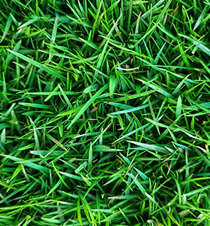Wildlife delivery need not be expensive, complicated or take
land out of production.
Sounds too good to be true...
We Can Help
Autumn is the time for planting new crops, and that includes the wildlife ones as well. This page describes a simple, cheap and effective way of boosting the vital early spring pollinator food supplied by planting Goat and Grey willows.
How Many
Today’s countryside is short of early pollen but farmers can help rectify this by evenly spacing at least one willow per 25 hectares in hedge gaps and field corners.
Background
Anybody following environmental news can’t have failed to notice the Government’s recent commitment to pollinators so this is now topical stuff. Wildlife delivery need not be expensive, complicated or take land out of production.
For years we have taken pollinators pretty much for granted and the job they do in securing many crop yields, but recent issues have raised pollinators to the top of many agendas.
Many say that pollinators are in trouble, with numbers dropping, and intensive agriculture is partly to blame. Well that’s as maybe, but what can be done that is cheap, easy and really makes a difference?
Simple... ‘Sow flowers, get insects’.
Sowing wild flowers fits many schemes, and much has been written on the subject. But there is an idea that is even simpler and cheaper: ‘sow willows get insects!’
Details
Some male willow trees produce characteristic large yellow catkins in early spring, the colour being produced by the pollen-covered anthers. Willows are dioecious which means that male and female flowers occur on separate trees.
It is the Goat and Grey willows which bear the big male catkins in March and April. These two common trees can hybridise, and unlike some other willows, they don’t need to have their toes in water.
There are other useful native flowering shrubs but only one other that flowers in March: Blackthorn. Slightly later-flowering species include Hawthorn, Crab apple, Wild Cherry and Maples.
March is the time many pollinators emerge and begin their new lives. It’s also a time of year when flowers are in short supply, the so-called ‘hungry gap’, so plants which flower in early spring (March-April) are very welcome.
Filling the Hungry Gap
So what can you do now?
Autumn is the time for planting new crops, and that includes the wildlife ones as well. A simple, cheap and effective way of boosting the vital early spring pollinator food supplied by planting Goat and Grey willows.
It is essential for female bees coming out of hibernation in March to get adequate supplies of pollen (protein) which is used to build them up and increase egg fertility.
OPTION ONE.
Go to a good garden centre and in February-March buy bare root
cuttings so the work has been done for you (but where’s the fun
and ownership in that!).
There is one very big downside to this method, and that is you
can’t select the stock, and there’s no guarantee you will get a
male tree.
OPTION TWO.
Almost guaranteed success comes from the following method:
- October to February is the best time to take cuttings as the sap is down and the plant is dormant. Select stems that have a thickness somewhere between a pencil and a thumb. These are then cut into 30 centimetre lengths with the basal cut just below a bud. Some cuttings can have the top cut off which will produce a more bushy plant. Larger cuttings may be taken - this speeds up the time till flowering, but failure of cuttings increases.
- Fill a few big flower pots with potting compost mixed with a bit of sharp sand to help drainage, and push several cuttings into each flower pot so half of the cutting is buried.
- Keep these well watered and after one year they can be planted out. Losses are reduced if at the end of the first year the cuttings are potted on for one more year, and then planted out.
- Planting out is best done in March as soon as the soil begins to warm up but before the cuttings are in leaf. It will take a couple of years for these cuttings to produce the flowers you need.
- The best place to plant is in a sheltered, sunny site either in a hedge gap or at the end of a hedge. Field corners are also good, where you can plant a group on the south side of an existing hedge.
- Tree guards are essential. The plastic netting tubes are better than the solid plastic tubes, which tend to force rapid, misshapen growth from the tree. Keep the young trees weed-free to about a metre radius for the first three years.
OPTION THREE.
There is of course an easier way, but success is much reduced. That is to take much bigger cuttings and plant them straight into their final place, put a tube round them and keep them weed free.
Join Our Community

Agrii X
We love engaging with clients and partners. Give us a follow and let's share stories for the community.

Agrii Instagram
A picture paints a thousand words. Follow us on Instagram to see what we are up to.

Agrii Facebook
Follow us on the worlds biggest social media site for the latest news and events straight to your feed.

Agrii LinkedIn
If you are all about the business, connect with us on LinkedIn to build your network
Stay In Touch

Newsletter Sign-Up
Receive email updates on topical news and information from around Agrii and UK Farming.

Listen To Our Podcasts
Listen to the Tramlines Podcast. Fortnightly chat about agriculture and trials with your host Tony Smith.

Agrii Insights
Read essential agri intelligence for profitable farming.

Find an Event
Join us for our upcoming events and tours.
Featured News

News - 07/12/23
‘The field of the future’: The Digital Technology FarmsWe have launched an innovative new project involving the use of several connected technologies that can be used to make agronomic decisions at field scale throughout the growing season.
News - 26/07/24
Biostimulant Seed Treatments : A boost to growth and yield
News - 05/07/24
SFI SOH4: Winter Cover following Maize Crops
News - 02/07/24
Agrii strengthens fruit team with five new recruits
News - 24/05/24
Successful OSR Establishment: A Proven Six-Point Strategy
News - 09/05/24
Investment in Mobile Colour Sorting Technology
From the fields
Get Growing
Find leading products for all your crop, livestock, and equipment needs

Your Maize options this Spring
Find the right maize variety for you this spring

SFI SAM3 Herbal Leys
Find the right SFI legume and herbal ley for your farm system

Growing Spring cereals? Find out more here
See our range of researched spring cereals for your rotation

Grassland to repair? Discover your options
Discover our range of grass seeds

Find out more about Environmental Mixtures
Need ground cover, bird seed and wildflower mixtures? We've got you covered

Find out more about Potato crops
We have deep expertise in potato crop management

Find out more about OSR
Robust varieties and crop management advice

Find out more about growing Vegetables
Specialist agronomy and solutions for high value crops

Find out more about Fruit
Dedicated horticulture and viticulture teams to help you manage your crops

Find out more about Hybrid Rye Crops
Growing wholecrop for AD or grain for livestock we have varieties and advice to help you grow

Find out more about Root Crops
A broad range of Root Crops for home-grown forage

Find out more about Innovation Crops
Options for profitable opportunities in your rotation



